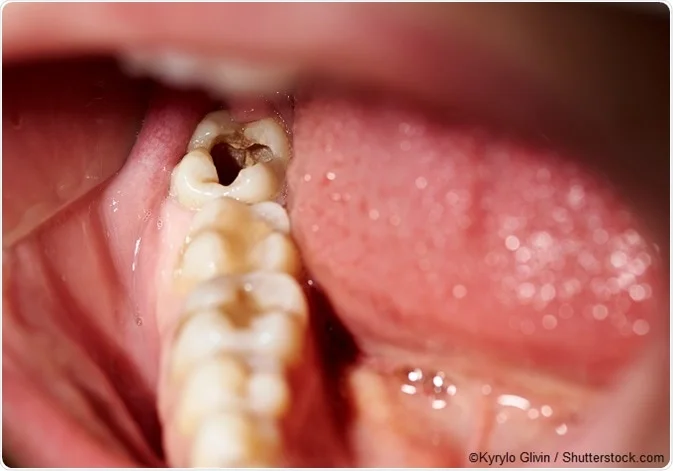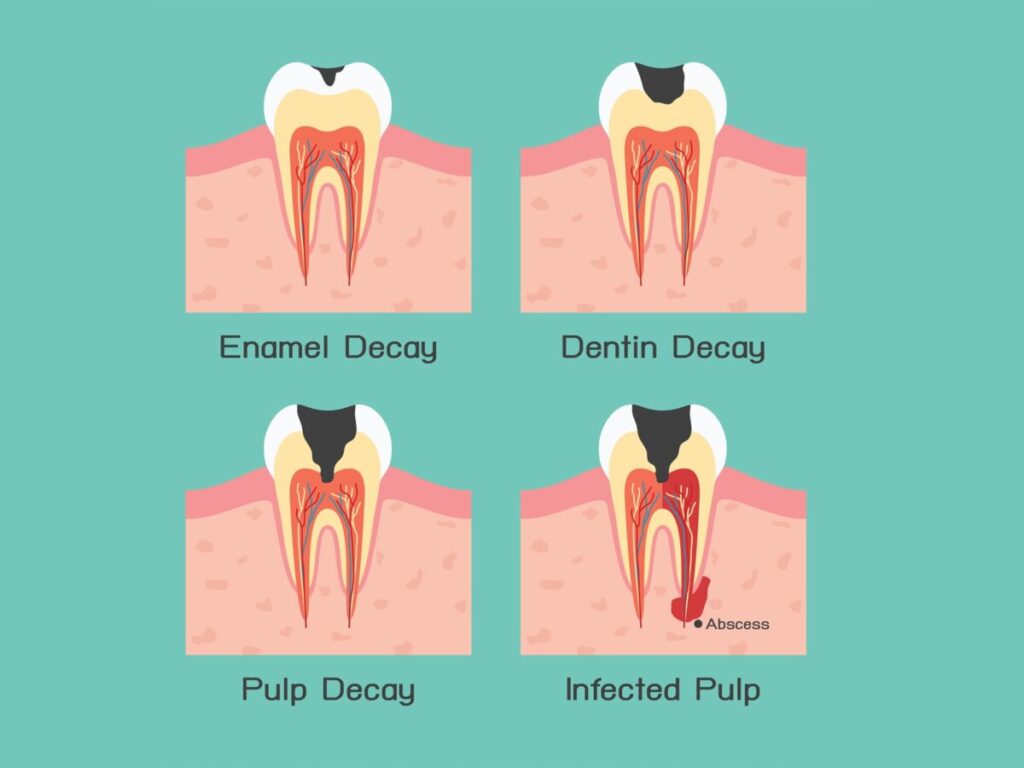Tooth decay :

Tooth decay is when your teeth get damaged and develop holes called cavities. It happens because of tiny germs in your mouth that eat away at your teeth when you eat sugary or starchy foods. If you don’t brush your teeth well, these germs make acid that can harm your teeth. So, to prevent tooth decay, it’s important to brush your teeth often and avoid eating too many sugary snacks.
Stages of Tooth Decay

- Plaque Formation: Bacteria in your mouth mix with food particles and saliva to form a sticky film called plaque on your teeth.
- Enamel Erosion: Plaque acids attack the hard outer layer of your teeth, called enamel, causing it to weaken and wear away slowly.
- Dentin Decay: Once the enamel is damaged, the decay progresses to the next layer of the tooth called dentin, which is softer and more vulnerable to decay.
- Cavity Formation: Decay continues to eat away at the dentin, creating a hole or cavity in the tooth. At this stage, you might start feeling sensitivity or pain in the affected tooth.
- Infection Spreads: If the cavity is not treated, the decay can reach the innermost part of the tooth, known as the pulp, where the nerves and blood vessels are located. This can lead to infection, causing more severe pain and possibly an abscess.
- Tooth Loss: If left untreated, the infection can spread to the surrounding tissues and bone, eventually leading to the loss of the tooth.
Tooth Decay Treatment
- Fillings: If the decay is caught early and hasn’t caused too much damage, the dentist can clean out the decayed part of the tooth and fill the hole with a special material, usually a type of plastic or metal. This helps to restore the tooth’s shape and function.
- Crowns: If the decay is more extensive and has weakened the tooth, a crown may be needed. A crown is like a cap that goes over the entire tooth to protect it and restore its strength.
- Root Canal: If the decay has reached the inner part of the tooth where the nerves and blood vessels are, it can cause a lot of pain and infection. In this case, a root canal may be necessary. During a root canal, the dentist removes the infected tissue from inside the tooth, cleans it out, and then fills and seals it.
- Extraction: Sometimes, if a tooth is severely decayed and cannot be saved with other treatments, it may need to be removed. This is usually a last resort when other options aren’t possible.
- Preventive Measures: Along with treating the decayed tooth, it’s important to take steps to prevent further decay. This includes brushing your teeth twice a day with fluoride toothpaste, flossing daily, eating a healthy diet low in sugary foods, and visiting your dentist regularly for check-ups and cleanings.
Symptoms of Tooth Decay

- Unpleasant breath odour
- Pain in the teeth or gums
- Feeling more sensitivity in your teeth, especially to hot, cold, or sweet foods
- Gums that are swollen or bleed easily
- Spots or stains on your teeth that are white or discoloured
- Seeing holes or small pits on the surface of your teeth
- Having a dental abscess, which might lead to fever, facial swelling, and severe pain
Conclusion :
Tooth decay, a common dental problem, occurs when bacteria in the mouth produce acids that erode the enamel, leading to cavities and potential infection. Early detection and treatment through dental fillings, crowns, or root canals are essential to prevent further damage and tooth loss. Practicing good oral hygiene, including regular brushing, flossing, and dental check-ups, is key to maintaining healthy teeth and preventing decay.

